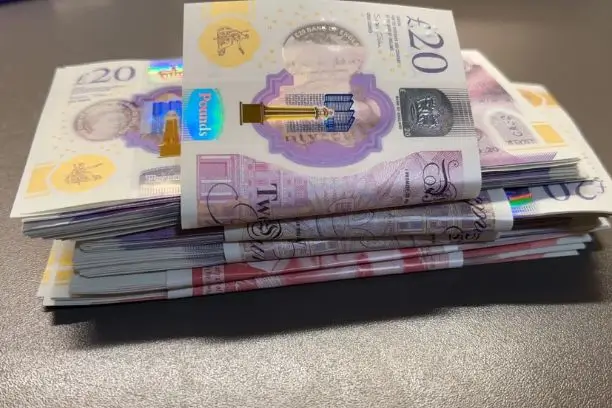UK Hopes to Lift the Pound
The British pound edged higher at the beginning of the week, buoyed by optimism surrounding renewed trade talks between the United Kingdom and the European Union. The meeting, taking place in London, is viewed as an opportunity to rebuild commercial ties that were shaken by Brexit. Although the euro held its ground, the pound strengthened against most major currencies ahead of the summit.

Image 1: EU and UK flag (Source: MarketScreener)
Momentum grew over the weekend when William Bain of the British Chambers of Commerce stated that a possible agreement could benefit several sectors. He cited a proposed defence arrangement that could result in contracts worth €150 billion for the UK’s defence industry. Discussions are also expected to focus on easing restrictions that have hindered agricultural trade since the UK’s departure from the bloc.
Adding to the pound’s appeal was the release of stronger-than-expected GDP figures. The UK economy grew by 0.7% in the first quarter of the year, surpassing previous forecasts and boosting confidence in the country’s economic recovery.
Attention now turns to upcoming inflation data due later in the week. The April Consumer Price Index is forecast to show an uptick in core inflation — which excludes categories like fuel and alcohol — from 3.4% to 3.6%. The report is likely to influence the Bank of England’s interest rate decisions, as rising prices typically make it harder for the central bank to lower borrowing costs.
US Dollar Under Pressure Following Moody’s Cut
While the pound found strength, the US dollar came under pressure. Late last week, credit rating agency Moody’s downgraded the United States’ top-tier credit rating from Aaa to Aa1. Although the downgrade was minor, it raised concerns about the country’s growing fiscal issues and added stress to the currency. The agency was quick to point out that it still had faith in the structure and leadership of the US financial system.
The market reaction was swift. The US Dollar Index, which compares the dollar to a basket of major currencies, dipped to around 100.40. This move helped push the pound to nearly 1.3370 against the greenback—a notable level not reached in some time.
Despite the setback, according to Forex News, there are factors that could keep the US dollar from sliding further. President Donald Trump recently signalled his interest in visiting China to engage in trade talks. His comments lifted hopes of progress between Washington and Beijing, easing fears of worsening trade tensions that could slow the global economy.

Image 2: Euro Currency (Source: Mitrade)
Interest Rates and Inflation Remain Key Themes
Yet the outlook for the dollar remains cloudy, especially with inflation and interest rates still dominating market sentiment. Many had anticipated that the US Federal Reserve might start cutting interest rates this year. But recent analysis from Morgan Stanley has poured cold water on those expectations. The firm now suggests no rate reductions will happen before early 2026.
Their economists explained that while trade risks have eased, elevated tariffs and persistent inflation could keep monetary policy tight for some time.
That view is supported by recent survey data. The University of Michigan revealed that American households now expect inflation to rise further over the next year, with expectations increasing from 6.5% to 7.3% in May. Such a sharp increase in outlook could make it difficult for the Fed to justify cutting rates without risking another price surge.
Markets are still pricing in a chance of rate cuts starting in September, but that view is losing steam as inflation data continues to trend higher.
This week’s key drivers will be the UK-EU trade outcome and the UK’s inflation release. These events are expected to shape central bank decisions and determine whether the pound can sustain its gains. As for the US dollar, the next move will depend on whether officials can manage fiscal challenges while keeping inflation under control.

